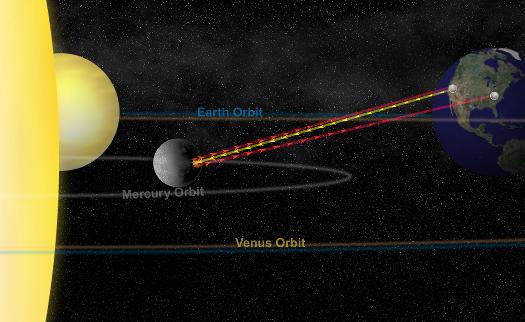![]()
Today’s image comes to us from a University of Delaware press release about spintronics; you can also take a look at an associated animation that shows something similarly incomprehensible.
So, first off, you should know that “spintronics” refers to a flavor of electronics that relies on an electron’s spin (as well as its charge) to communicate information. It holds great promise for computation, blah blah blah, and indeed, the advances reported in the aforementioned press release sound significant. But the image…
For those who have studied quantum mechanics, the idea of spin being represented by an arrow will be familiar, but certainly the word “spin” does not connote such a mental image, and incorporating the 3-D arrow icon into the visuals (sans explanation) isn’t exactly a compelling starting point. Then, what exactly is going on, with an electron apparently splitting in two before one (half?) tumbles down a silicon ramp toward… What exactly? The whole sequence of images really, truly communicates nothing. Nada. Nada y nada y nada. Makes me feel like a nihilist.
Also, is it trying to look patriotic, with red electrons, blue silicon, and white “Al,” “CoFe,” and “NiFe” (which, taken together, look more like misspellings than chemical formulae)? The research group did get funding from the U.S. Office of Naval Research. Which also makes me feel like a nihilist.
It’s kewl that a researcher can learn to use freeware to create graphics, but that doesn’t mean the fruits of his efforts are ready for public consumption.
Have a great weekend! I myself am off to New York for a few days.









